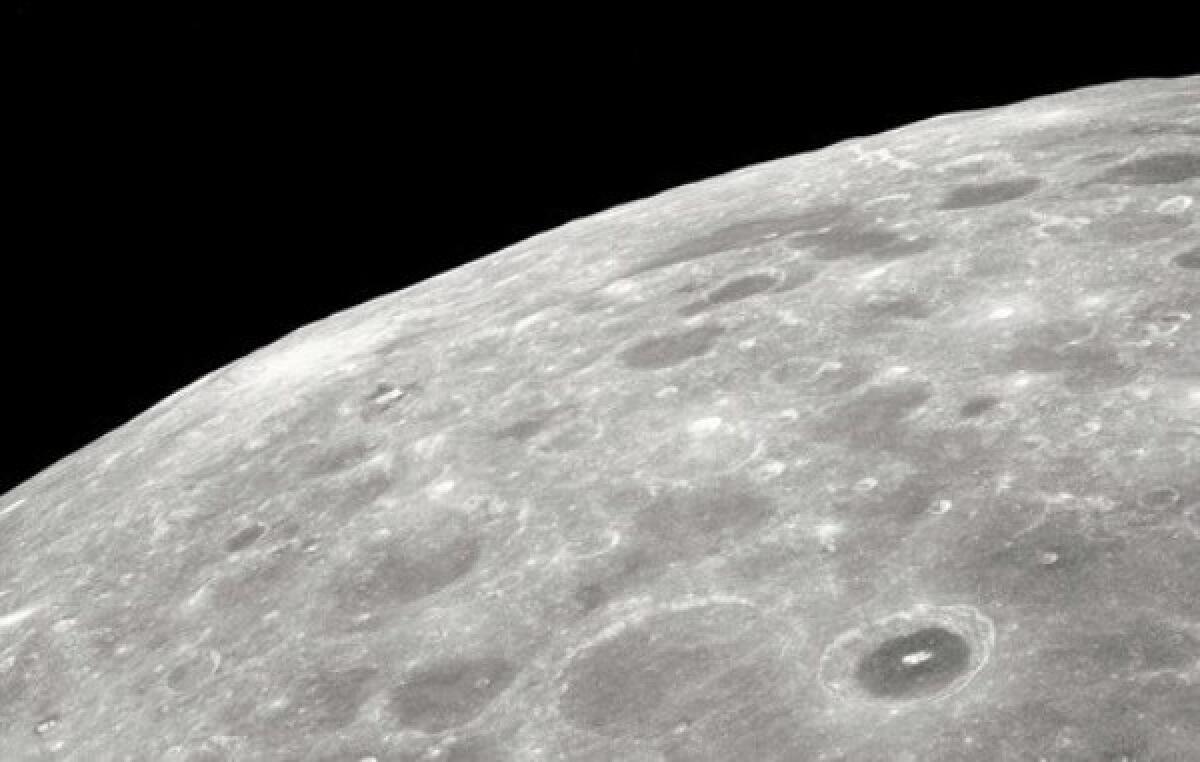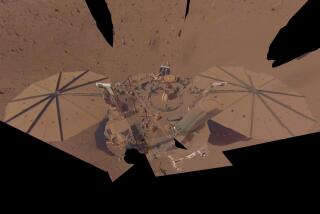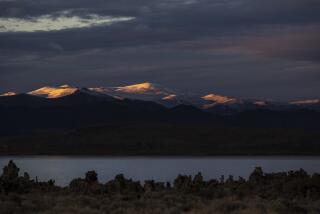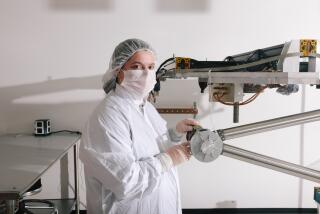‘The moon is alive,’ NASA says after water discovery

Scientists have found “significant” amounts of water in a crater at the moon’s south pole, a major discovery that will dramatically revise the characterization of the moon as a dead world and likely make it a more attractive destination for future human space missions.
“The moon is alive,” declared Anthony Colaprete, the chief scientist for the Lunar Crater Observation and Sensing Satellite mission.
That mission used a rocket Oct. 9 to punch a hole about 100 feet across in the moon’s surface, then measured about 25 gallons of water in the form of vapor and ice. While that’s not even enough to swim in, it could indicate sufficient water in permanently shaded craters at the poles for future astronauts to live off the land.
NASA’s plans, currently under review by the Obama administration, call for a return to the moon at the end of the next decade, and construction of a lunar base in which astronauts could live and work for months at a time.
The presence of large quantities of water would make that plan more practical, since water could be used for drinking, breathing and even making rocket fuel.
A resource-rich moon could also serve as the perfect low-gravity launchpad for missions that would carry astronauts and their families elsewhere in the solar system, fulfilling the dreams of generations of science-fiction writers and visionaries.
“This is painting a surprising new picture of the moon. This is not your father’s moon,” said Greg Delory, a space scientist at UC Berkeley.
After the Apollo missions of the 1960s and ‘70s, the moon was regarded as a dead, forbidding place with little to offer future explorers.
“What’s really exciting is we’ve only hit one spot,” said Peter Schultz, a geology professor at Brown University and a co-investigator on the mission. “It’s kind of like when you’re drilling for oil. Once you find it in one place, there’s a greater chance you’ll find more nearby.”
The $79-million lunar crater mission was launched in June to try to uncover the source of large quantities of hydrogen that had been measured in lunar craters at the poles. If there was water on the moon, scientists reasoned, it would be in these shadowed craters, which haven’t seen sunlight in billions of years.
The satellite targeted the Cabeus crater at the south pole, first steering its companion Centaur rocket into the surface.
Then the satellite flew through the cloud of debris and dust kicked up by Centaur, using its near-infrared and visible light spectrometers, along with other instruments, to read the contents of the debris cloud. Spectrometers identify compounds by analyzing the light they emit or absorb.
No cloud showed up at first, causing some scientists to worry that the Centaur had hit rock. But members of the scientific team became excited when they started looking at the data transmitted back to Earth just before the satellite crashed as planned a short distance from Centaur.
The “eureka” moment came in recent weeks when the team realized that a strong signature for water had been picked up by more than one instrument. “It’s a pretty tight fit for water vapor and ice,” Colaprete said in a briefing at Ames Research Center in Mountain View, Calif., which managed the mission.
This is not the first discovery of water on the moon. Several weeks ago, India’s Chandrayaan 1 spacecraft found clear signs of a microscopic film of water mixed in with lunar soils over large areas of the moon.
But those amounts were so insignificant that it is unlikely the water would be useful to future colonists.
This latest discovery, however, is a potentially significant source of water, the scientists said.
It’s unlikely the water, at least at this site, is in the form of an ice sheet, Colaprete said. It’s more likely to be mixed in with the soil.
The question now is, where did the water come from? Possible sources include comets and asteroids, which are considered likely sources of the water on Earth.
It’s also possible the hydrogen was delivered by solar wind to the lunar surface, where it was converted to water. In shadowed craters, the water could be stored as ice for billions of years.
Polar craters on the moon are some of the coldest places in the solar system, dipping below minus-360 degrees.
The scientists hinted that other surprises may be coming in the next few months. “The full understanding of the LCROSS data may take some time. The data is that rich,” Colaprete said.
This new picture of a dynamic moon comes as the Obama administration is reconsidering the future of the human space flight program. The Vision for Space Exploration announced by the Bush administration in 2004 called for a return to the moon by 2020 and the eventual colonization of Mars.
But the Augustine Commission, appointed by Obama to review those plans, reported just weeks ago that NASA will not get back to the moon anytime soon unless it gets a lot more money, at least $3 billion a year.
The commission also questioned whether the moon is a worthy goal, citing the “been there, done that” factor.
These new discoveries could be game changers, since they raise the possibility that a colony on the moon could be virtually self-sustaining.
Obama has given no indication yet as to what he intends to do.
More to Read
Sign up for Essential California
The most important California stories and recommendations in your inbox every morning.
You may occasionally receive promotional content from the Los Angeles Times.










